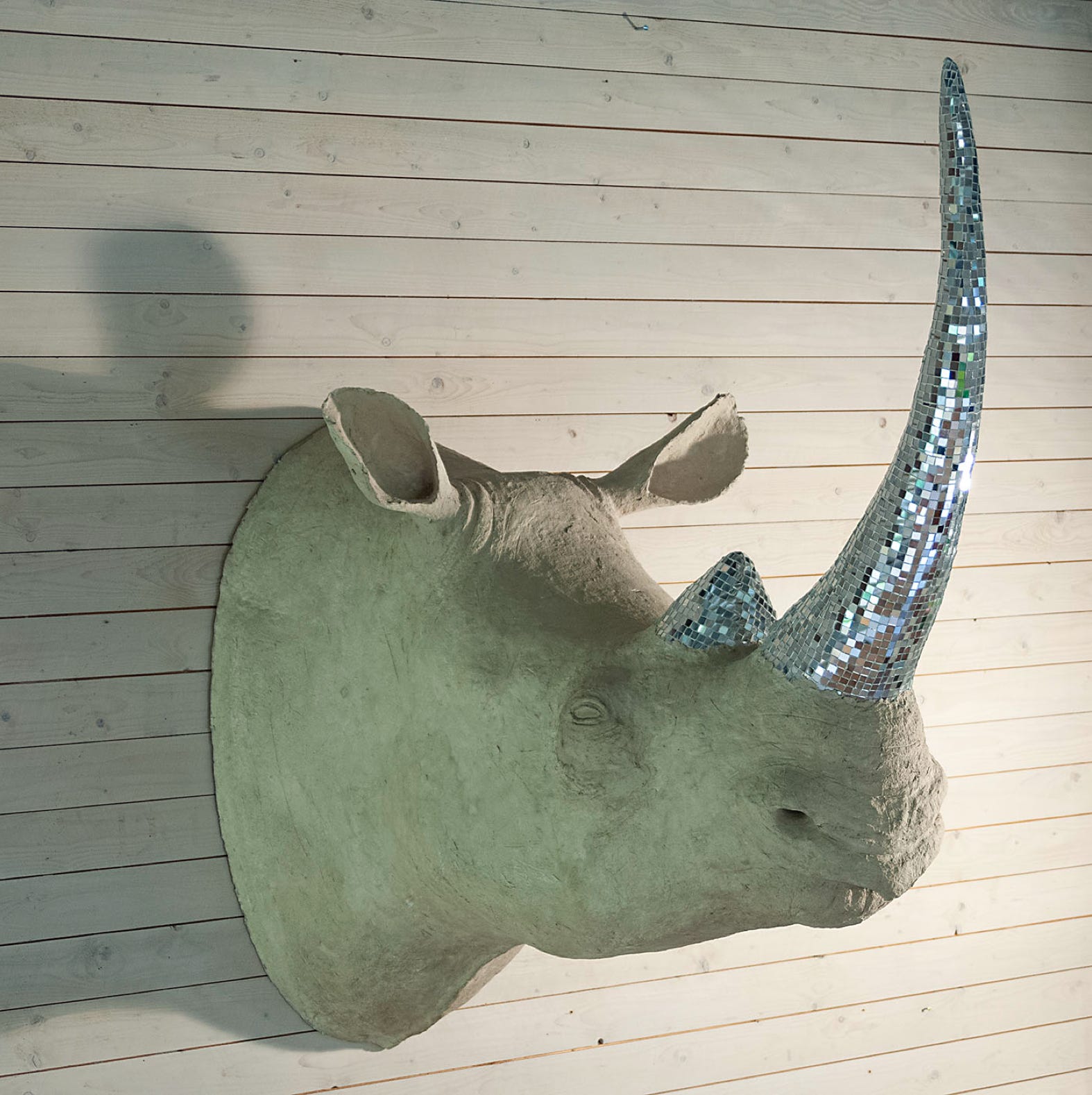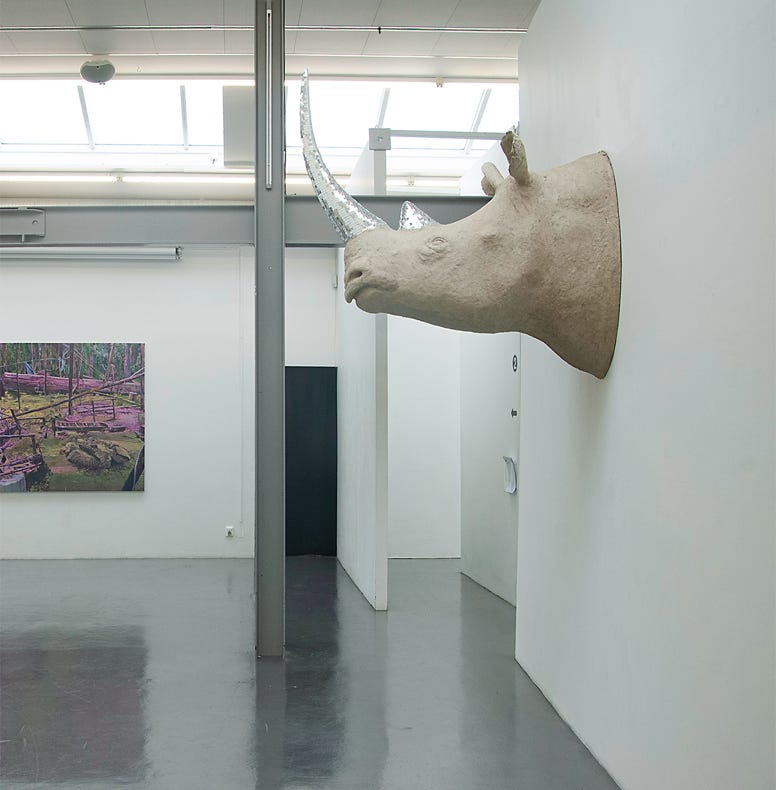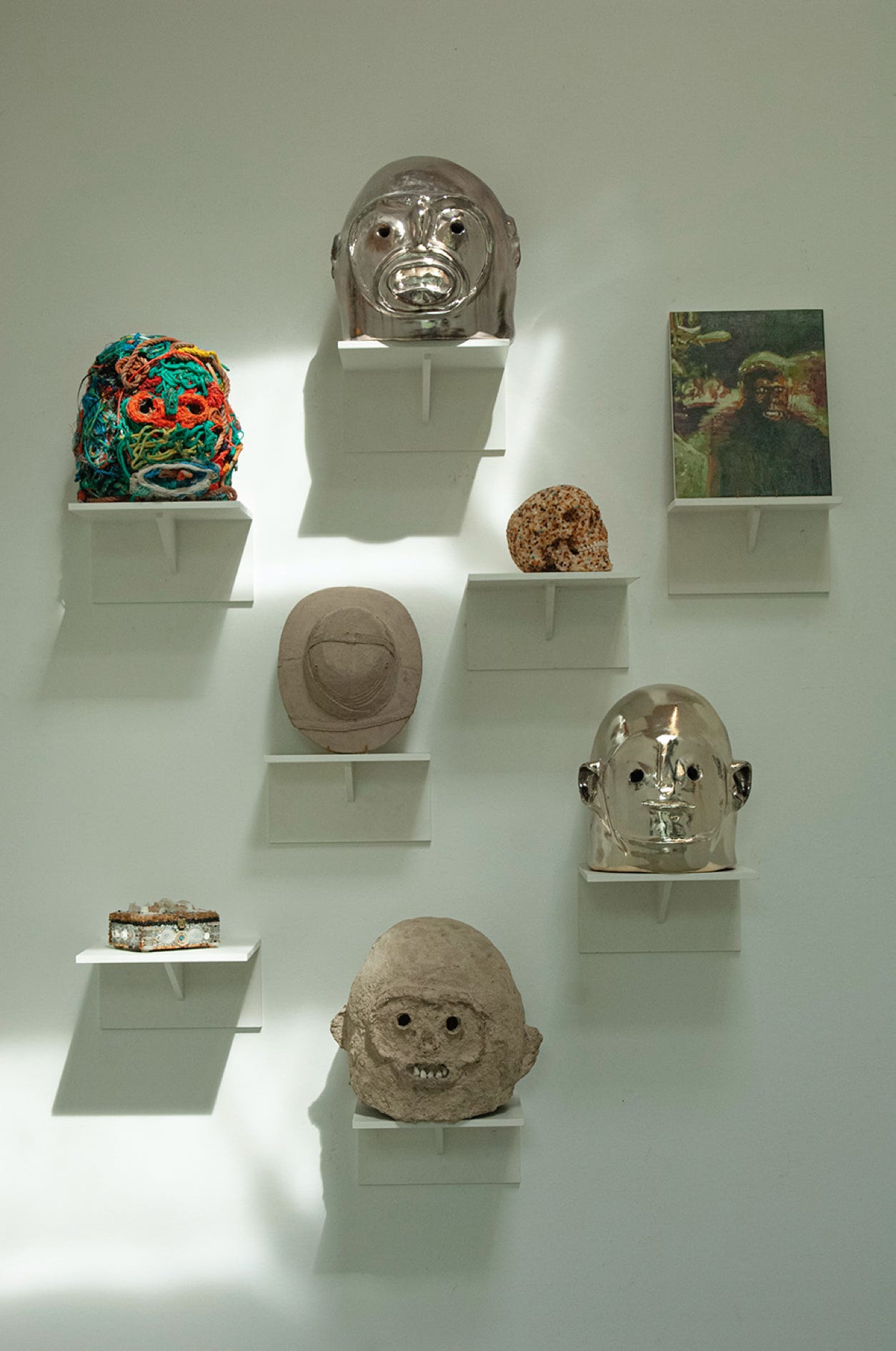STUDIO TOM BOGAARD / MASKS AND ARTEFACTS
Rhinoceros’ Dream - 2016 - papier-mâché, mirror mosaic - ca 140 x 130 x 80 cm


White Noise - 2015 - papier-mâché, flat screen TV, video movie 4”31 min - 47 x 37 x 34 cm

Red Cave Revisited - 2020 -
vinyl paint on canvas - 58 x 44 cm
Red Cave - 2020 - jesmonite, wood, vinyl paint - 130 x 80 x 80 cm
For the Love of boG - 2013 - plastic pellets (nurdles) on anatomic model - 16 x 15 x 21 cm - nurdles found on beaches in Sardinia, Cornwall and Dorset and the West Coast of Sweden
The Firstborn - 2014 - papier-mâché - 33 x 35 x 32 cm
The Good Son - 2014 - papier-mâché, pebbles - 34 x 37 x 34 cm
Installation view at the WUNDERKAMMER exhibition at Konsthallen in Hishult 2020

© Tom Bogaard 2023
This website makes use of cookies. Please see our privacy policy for details
OK